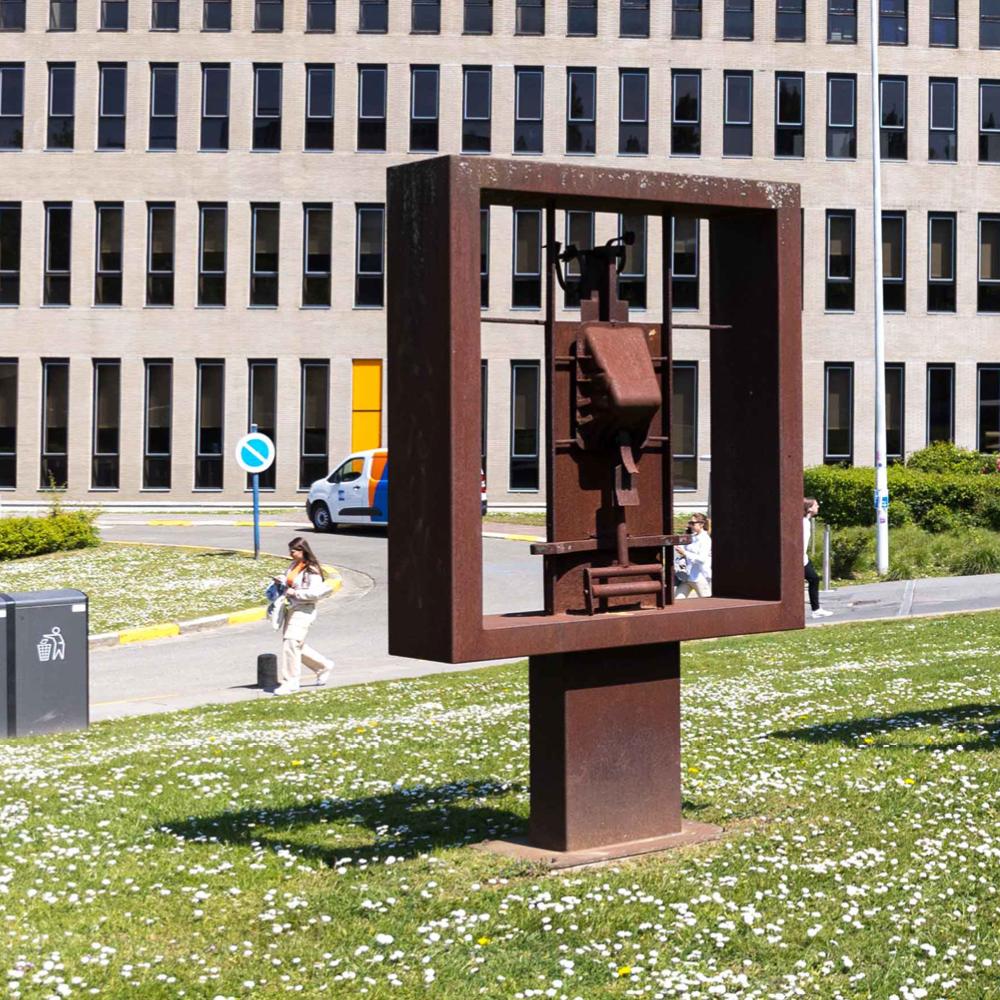
Camiel VAN BREEDAM (°1936, Boom)
Title: Libertad I & II
Year: 1995
Materials: corten steel, iron
Dimensions:
220 x 130 x 43 cm
220 x 130 x 43 cm
With his work, Camiel Van Breedam wants to make a social commitment. Through his art, he criticises the disposable culture, social inequality, war, bureaucracy and environmental pollution. Objects that have become unusable as a result of our disposable culture become art in his hands. Van Breedam seeks beauty in seemingly worthless objects and gives them a new lease of life by displaying them on a pedestal, in a cabinet or on the wall.
He goes to scrapyards and old factories looking for objects and materials that have lost their original function. He then assembles them into new works of art, often characterised by a Baroque excess. Van Breedam was one of the first artists in Flanders to focus on assemblage art, in which unusual materials are brought together to create works of art that transcend the categories of ‘painting’ and ‘sculpture’.
Van Breedam also applied this assemblage technique in the creation of Libertad I & II. In each of the rusty frames, which in their own quirky way represent two ‘windows’, Van Breedam mounted an assemblage of worn metal objects. The artist sees the window as a symbolic boundary between the inside and the outside. On the one hand, a window can have a protective function. In a prison, for example, windows close off the passage from the inside to the outside, or in a fortress they prevent access from the outside to the inside. On the other hand, an open window can also be a friendly invitation to take a look inside a welcoming home. In that case, the window symbolises the freedom that man has to look at the world with an open mind.
Van Breedam created Libertad I & II in 1995 and the work was purchased by VUB. The purchase was part of the ‘Kunst op de Campus’ (Art on Campus) project and was the first acquisition by the newly established cultural council. Their goal: to promote cultural life at the university. The official inauguration of the work of art on campus only took place on 18 May 1995, during the celebrations to mark the 25th anniversary of the university.
The Libertad I & II sculptures are not the only works by Camiel Van Breedam in VUB’s art collection. On the second floor of building D at the VUB Main Campus, you can also view an installation with a puzzling title, Acts XXVI, 24 "Handelingen XXVI, 24 "Ge raaskalt (*) Paulus: uw grote geleerdheid maakt u waanzinnnig" (*) Veel van wat Paulus zei was voor de Indiaan, de heiden, onbegrijpelijk" from 1977.
Van Breedam uses the story of the persecution of the Indians in North America as a metaphor for groups that are excluded on the basis of their otherness. He is critical of the outrages committed against indigenous peoples by capitalist powers on the basis of the Western ideals of prosperity and progress. The Indian here is a symbol for every oppressed minority group - it can just as easily refer to the struggle of Jews, homosexuals or resistance fighters. Van Breedam’s critical humanist vision is in keeping with the liberal ideology on which VUB was founded.
Plan your visit
The Humanist Sculpture Park is open 24/7 and can be visited free of charge.
Parking is available and the area is wheelchair-accessible.
VUB Main Campus
Pleinlaan 2
1050 Elsene
Information about the sculptures
Each sculpture is accompanied by a QR code that gives access to an audio fragment. You can play it on your smartphone to discover the stories behind the sculptures. We recommend that you bring headphones for a more comfortable audio experience.